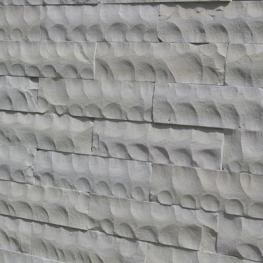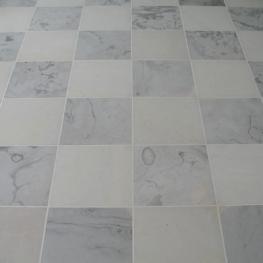Orgita dolomite
Orgita dolomite is quarried in Rapla County near Märjamaa. It is a micro layered and very fine grained dolomite formed during the Silurian period in a topical area sea with quiet water bottom conditions. The stone was formed by sedimentation of clayish dolomuds. The stone has a characeristical horizontal pattern that looks like holes made by worms and an uneven micro- and macro-porousity.
First known uses of this stone date back to over 600 years ago. The oldest and dated details from building are from 14th century. These details belong to Märjamaa, Rapla and Vigala churches also St Mary's Cathedral in Tallinn. Orgita stone has always been regarded as a good as a good raw material by stonemasons. A lot of masonry details from 16th to 19th century have stood against the test of time.
Orgita stone has relatively good frost resistance, which has seen use in besides masonry also as facade coverings, floor tiles and various other places.
The stone has following physical-mechanical properties:
- Weight by volume – 2390 kg/m3 (EN 1936)
- Water absorption to weight – 4,8 % (EN 13755)
- Porousity – 15,7 % (EN 1936)
- Frost resistance – 48 cycles (EN 12371)
- Flexural strength – 16,3 MPa (EN 12372)
- Wear resitance – 24,5 mm (EN 14157)
These days Orgita dolomite is used in the production of facade coerings, floor tiles, masonry and decorative details, fireplaces and more. Here's a small list of places where Orgita stone can be seen:
- Orgita mainor main building walls in Rapla County,
- Indoor walls and floors of the new Pirita Convent building,
- Facade of Riga's hydroelectirc power plant,
- KUMU


